“I am an astronaut!” It was inspirational to watch a 62-year-old primary teacher come bouncing out of a simulator, arms stretched out like she was going to do star jumps. It was just as inspiring to see a highly experienced school principal screaming as she jumped off a platform into thin air on a zipline clutching onto her bright pink ‘Space Princess’ cap. I remember grinning and thinking to myself, “I am sure she said her expertise was in drama and English and knew nothing about science…”
Such is another day in Space Camp. This year is trip number 10 for me. I have been taking groups there since 2008 and have assisted and inspired others to take their students and colleagues; volunteering my time and expertise to enrich the opportunities Australian students have in Science, Technology, Engineering and Mathematics (STEM) education. In the past few years, I have been linking industry and education through connecting and collaborating around the Space Camp experience.
What is Space Camp? The answer is not simple. It could be said that it is a unique environment suited to launch life-changing learning, an inspiration incubator or a multi-day residential camp where participants’ senses are bombarded with all things aerodynamic, aeronautic and robotic. To truly experience Space Camp, participants have to live IN it. Be immersed. Be active. Be brave.
Space Camp was founded by Ed Buckbee in Huntsville, Alabama, in 1982. It creates and delivers cutting-edge educational programs that have seen more than 650,000 students graduate, and has delivered on its goals of promoting science, mathematics and technology education. Integrated curriculum is central to the Space Camp philosophy. By delivering a diverse range of courses, Space Camp fires the imaginations of all attendees. Apart from the knowledge around space science, participants discover potential that traverses from ‘What if?’ to ‘CAN DO!’.
Space Camp creates the perfect risk-taking environment that enables participants to develop the skills required to problem solve and create in an inspirational and innovative space. It has specialised simulators and resources that are unique to Space Camp. With partnerships with National Aeronautics and Space Administration (NASA) and the Smithsonian, the site has exhibits like no other, as well as travelling exhibits.
In an age where virtual education is becoming a reality – virtual excursions, virtual worlds, virtual visitors, virtually reality, virtually anything – it is often forgotten that some of the best learning experiences students ever had were ones where they got messy, broke things or outcomes did not turn out the way they expected. This is what happens at Space Camp! Expect the unexpected. Take on new ideas.
When registering for this amazing experience, there are options:
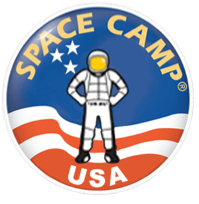 Space Camp
Space Camp
The Space Camp programs allows students to work together as a team in one of the world’s largest spacecraft collections. All participants experience the astronaut simulators such as the ⅙ gravity chair, the Manned Manoeuvring Unit and the Multi Axis Trainer. The six-day curriculum incorporates real-world applications of Science, Technology, Engineering, Arts and Mathematics (STEAM) education. Trainees prepare to become the new generation of Lunar and Martian explorers by actively participating in hands-on activities that place them in the role of spacecraft designers, mission controllers and astronauts. Eligible participants aged 15 years and over are offered the opportunity to complete a challenging space-life experience with SCUBA-based microgravity orientation activities.
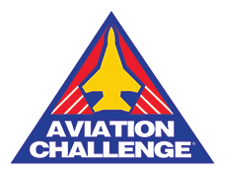 Aviation Challenge
Aviation Challenge
This program is geared toward fighter pilot training with intense survival skills and flight simulations. Students are challenged in the fields of aerodynamics, aeronautics and jet propulsion using simulators and the latest techniques in survival tactics and rescue missions. Teamwork, leadership and decision-making skills are the focus.
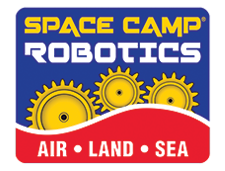 Robotics Camp
Robotics Camp
Robotics Camp participants work together in a simulated business environment where winning proposal teams design and build robots. Unmanned vehicles, drones and remote control design and operation are some of the activities offered. Trainees learn engineering and design of robotics on land, in the air and in underwater environments.
A Space Camp bus is used to transport participants to the various activities on site. An IMAX theatre and amusement park are located within the camp facilities. There is a digital theatre in the multi-million dollar museum that houses one of the three remaining Saturn V rockets in the world. Oh, and the Apollo 16 capsule and the NASA Mobile Quarantine Facility (MQF) are in the same room!
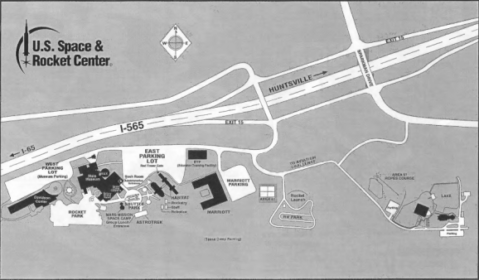
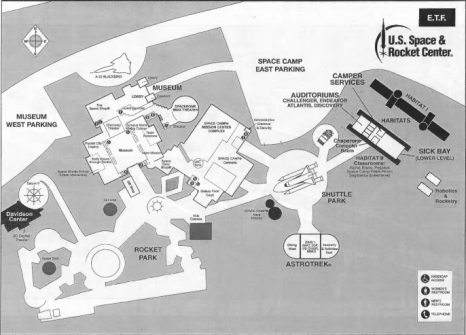
Each program is tailor made to suit the needs of the participants. This means that students registered for Space Camp will still experience some of the Aviation Challenge activities and complete part of the Robotics Camp program as well. All curriculum programs are interwoven and ensure a focus on real-world scenarios with decision-making, skill development and leadership capabilities as the key. Highly experienced crew trainers deliver a flexible, differentiated learning program to allow a focus on individual needs.
Upon arrival at Huntsville International Airport, the crew trainers take over. They are passionate about STEM education, highly skilled and love what they do. “We truly believe Space Camp changes lives by giving our trainees a vision for their future and the confidence to achieve whatever it is they want to pursue. We call it ‘cracking their cosmic egg’.” One Space Camp graduate won a NASA contest to have a tool he designed 3D printed aboard the International Space Station (ISS).
Returning from Space Camp is difficult. Deorbit can be hard if students are unprepared. There has to be a debriefing as well as plans on how to maintain interest that has been created. Repeated and growing STEM experiences will ensure that momentum is maintained.
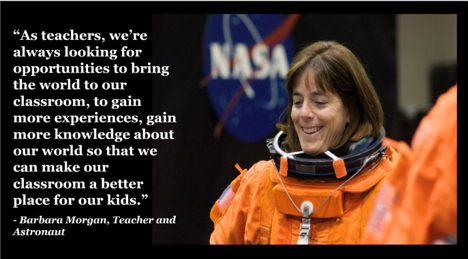 People often ask me, “Why do you keep going back? Why do you spend your time doing this?” They obviously need to come along and find out! In 2015, more than 600 Australian students and their teachers attended Space Camp USA and the numbers are growing annually. In the PwC report, Making STEM a Primary Priority (2016), it seems that my philosophy from 2007 is being reinforced by others. “We can choose to do more of the same and slip even further behind, or we can make major differences in how we teach science and maths.” Providing the opportunity for all Australians aged 10 and over to come to Space Camp USA awakens the adventurers and takes them on a learning journey of discovery.
People often ask me, “Why do you keep going back? Why do you spend your time doing this?” They obviously need to come along and find out! In 2015, more than 600 Australian students and their teachers attended Space Camp USA and the numbers are growing annually. In the PwC report, Making STEM a Primary Priority (2016), it seems that my philosophy from 2007 is being reinforced by others. “We can choose to do more of the same and slip even further behind, or we can make major differences in how we teach science and maths.” Providing the opportunity for all Australians aged 10 and over to come to Space Camp USA awakens the adventurers and takes them on a learning journey of discovery.
Why did I become a teacher? To make a difference. To inspire the next generation to be the best they can be. To create passionate learners who are confident in building their identity. Over the years, more than 250 students, parents and teachers have come on the Space Camp trip. When asking for feedback about their experiences, this is what some students reported:
- “I felt good because I did my best for the first time.”
- “The thing that I gained was my confidence. When I was in Space Camp I did things that I would never had even dreamt of in my life. It was like it was a whole new me.”
- “I could write a novel about the different ways of how Space Camp has changed my life and made me believe that anything is possible (however cheesy that may sound). That as long as I believe it possible, it is 100 percent achievable. I would never trade my Space Camp experience for anything. I look upon that part of my life as a turning point and although I said it did not shape my career path, it built up my confidence to believe in myself and determination to achieve my dreams.”
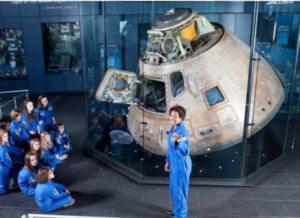
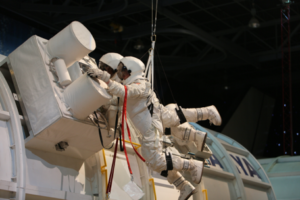
Space Camp Hall of Fame members, who are all graduates of Space Camp, work tirelessly with students and alumni to support graduates of the programs to achieve their dreams. Their careers are varied and link back to their Space Camp experiences:
- Col. William Burke Hare III, U.S. Air Force, Ret. – GPS and satellite
- Ed Van Cise, NASA ISS flight director (Twitter: @Carbon_Flight)
- Dr ‘Kate’ Rubins, astronaut due to fly to ISS in May 2016 (@Astro_Kate7)
- Penny Pettigrew, Payloads Communication Manager (@PaycomPenny)
- Dottie Metcalf-Lindenburger, astronaut (@AstroDot)
- Samantha Christoforetti, astronaut (@AstroSamantha)
- Bobak Ferdowsi, flight director of the Mars Curiosity team (@TweetsOutLoud)
Other Space Camp alumni include:
- George Whitesides, CEO of Virgin Galactic
- Lori Garver, former NASA deputy administrator (@Lori_Garver)
- Elon Musk, CEO and CTO of SpaceX
- Sergey Brin, co-founder of Google
- Pierre Omidyar, founder and chairman of eBay
For more information, visit https://www.youtube.com/watch?v=uq-QAMZaXfM
Australia’s future capacity for innovation is directly linked with the knowledge, skills and attitudes of its young people. It is up to educators to provide as many opportunities, both inside and outside the classroom, for their students to reach their full potential.

Jackie Slaviero

Latest posts by Jackie Slaviero (see all)
- From Imagination To Innovation - April 26, 2018
- Space Camp – An Inspiration Incubator - June 17, 2016
You must be logged in to post a comment.

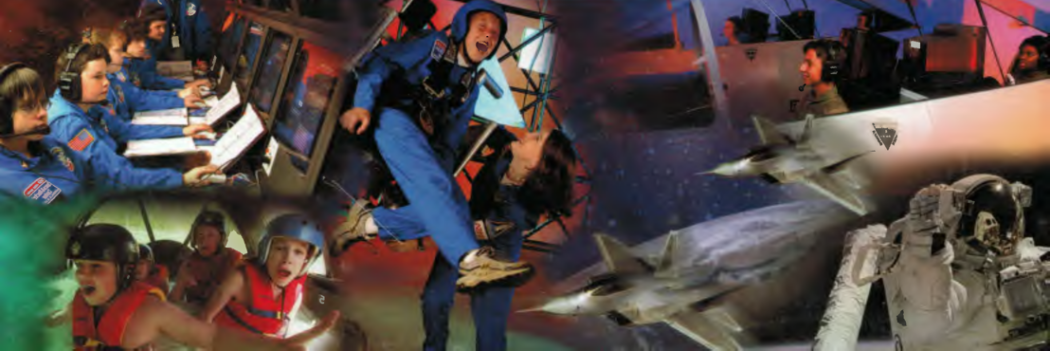
There are no comments
Add yours